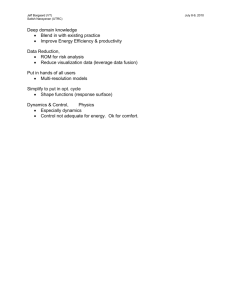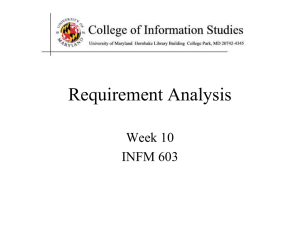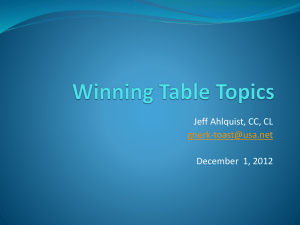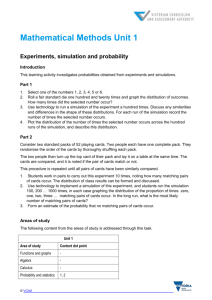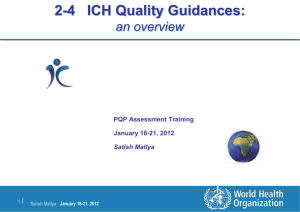Computational_Science_Meeting_Design_Flip_Chart_1a
advertisement
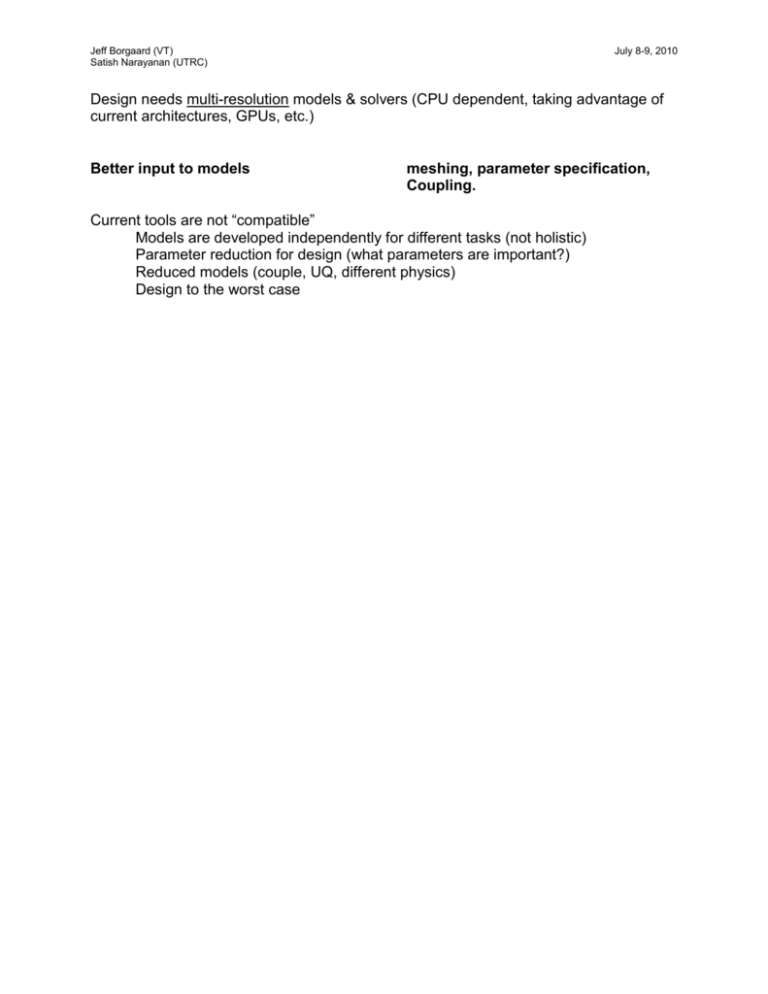
Jeff Borgaard (VT) Satish Narayanan (UTRC) July 8-9, 2010 Design needs multi-resolution models & solvers (CPU dependent, taking advantage of current architectures, GPUs, etc.) Better input to models meshing, parameter specification, Coupling. Current tools are not “compatible” Models are developed independently for different tasks (not holistic) Parameter reduction for design (what parameters are important?) Reduced models (couple, UQ, different physics) Design to the worst case Jeff Borgaard (VT) Satish Narayanan (UTRC) July 8-9, 2010 Buildings are stochastic Designed using one-point (ideal or peak conditions) Performance changes over time (requirements) Software does not adequately model fine scales in components. What are the important parameters? Research tool industry (tools that bridge the gap between modern industrial practice and the current research) Mathematics for uncertainty analysis (apply to existing simulation tools or develop new tools) 100s of parameters High fidelity reduced models Take advantage of passive resources Tools needed to explore new mechanisms in control of buildings (explore “what if” scenarios) Actual/design does not account for climate, tuning, etc. QC should be introduced in build Simulation codes Design times < 2 months to put in practice Tools are constrained to keep this design cycle time Jeff Borgaard (VT) Satish Narayanan (UTRC) July 8-9, 2010 Construction/Commissioning Tool or building blocks (research practice) Financial incentives IPD (all stakeholders involved could identify inefficiencies) Simulation: design & compliance (who is responsible if a contractor makes changes?) Metric: see Comnet (Michael Holtz), Occupant use Engaging occupants in M&V Affect occupant behavior Fault detection & management Computational priorities Fault detection identification of performance problems - tuning Simulation of climate adaptive performance Unifying model – design, construction, operation Functional testing vs performance at commissioning model calibration – data collection (1 year ) Jeff Borgaard (VT) Satish Narayanan (UTRC) Operation How do we make best use of all measurements? model predictive control Model validation is needed (should match modes) Math and/or engineering challenges Communication between scientists & building managers is required July 8-9, 2010 Jeff Borgaard (VT) Satish Narayanan (UTRC) July 8-9, 2010 Design | Construct | Control Open Discussion J Glimm: will performance = real world ROM full order with validation Data + validation. V&V Nick Long, NREL: data gathering - ground temp Slab temp Weather Translation of math/architect models to Simulation Models. BIM (mega BIM keeps simulation output information storage) Standards analysis scale up to city level systems Understand/model occupants Arch to SIM & human factors > not in ASCR Geometric modeling ASCR – math of petascale data. Existing program. Includes data assimilation/ROM Store data preserving design intent Hans: Metrics (cost) SIM – UQ – optimization (cost) will lead to adoption What is the potential gain from optimization? What components of models do we trust? Michael (LBNL): Tools: -data -phys. -compilers BIM & control/HVAC in the simulation Thermal – Air – Elect -- Grid \ | | / HVAC system sizing & cont analysis DAE & discrete models Optimization with mixed integer programming & stochastic simulation. Usable by design engineers Jeff Borgaard (VT) Satish Narayanan (UTRC) July 8-9, 2010 Simulation of multiscale systems. Soil (days) control (sec) Component models coupled/exchanged through lifecycle. Opt with large numbers of parameters under high uncertainty In operation control under uncertainty (act state or sensor inform. Model (material properties)) Robust design, estimation and control for large scale systems. Design for better control (management of uncertainty) for better construction/control Assess passive control vs active control design trade-offs The large amount of data in buildings provide an opportunity for validating models not usually seen in other fields. John ALG: optimization – multi obj. mixed int. Control and efficiency can be competing objectives Uncertainty in f, in parameters, discrete uncertainty Simulation under occupancy Data reconciliation with uncertain model Software Engineering: input parameters Architecture Construction HVAC GUI for practitioners (non expert) Computing platforms – algorithms on All req. diff approaches Rapid prototyping – interface HPC (a variety of platforms) PC Cloud Grid ROM with varying parameters (climate, materials, etc) Scott: 2006 complex systems report areas (link on wiki) Application driver for opt of Computational Science 2011 This white paper should: FOCUS on fundamental research issues – WP Jeff Borgaard (VT) Satish Narayanan (UTRC) July 8-9, 2010 And may be seen as complementary to the energy hubs J. Grosh: “user driven’ applied math + CS program. CS challenges – model red from “LARGE” sims. Babel Boundary cond. modeling Software engineering | ______ | | | | | | blessed by architect | ---------| | ___ | | | | -----| |______________________________________ Complexity of physics/models vs computational effort (e.g. cycles) Modeling sensors/real-time Accelerating a policy obj. through math + CS What is unique to buildings? Path from research to application Marcello: building industry is resistant to change in general. Need faster tools/cost efficiency Cost of changes design At construction (cheap) At operation (expensive) Owners are applying pressure to architects, builders, etc. Feedback in buildings usually comes from failures (not from underperformance) Learn from field data (while building is in use) Todd: industry & math communication metrics (when do we declare success?) Validation & verification, state estimation, calibration Optimization Jeff Borgaard (VT) Satish Narayanan (UTRC) July 8-9, 2010 Sensor placement semi-definite programming Time delays in system (distributed vs centralized control) Design for retrofit CS – visualization, I/O, scientific computing, Workflows metadata Behavioral economics (might model occupancy) (401k opt-out) Greg, HOK: optimization of a static bldg. of the design conditions. Fitness testing in geometric relations. Existing buildings: modeling inference analysis Point clouds – extracting information from existing buildings Tools. CS standards Problems Deliverables Timeline
